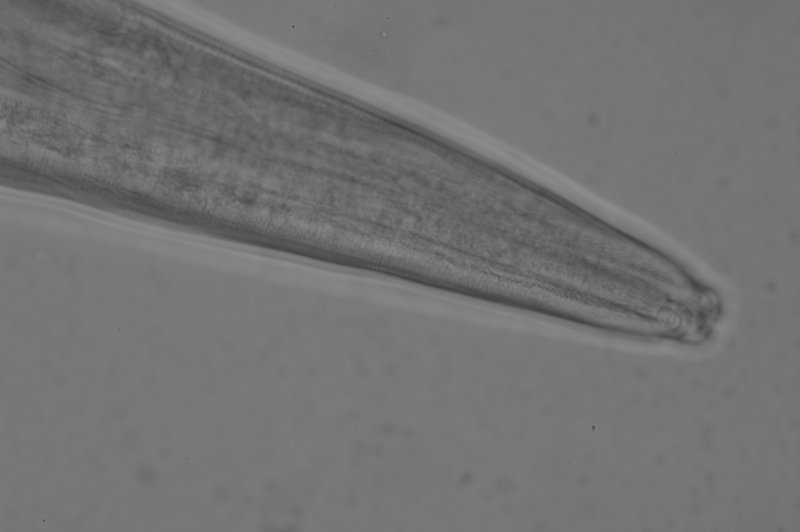Cervonema allometricum
Cervonema chilensis
Cervonema hermani
Cervonema papillatum
Cervonema shiae
Comesoma hermani
Comesoma minimum
Dorylaimopsis magallanense (Chen & Vincx 1998)
This individual was collected at CIMAR24 station 77 at a depth of 212 m at the mouth of the Aysen Fjord, Aysen region. This male individual matches the description given by Chen & Vincx (1998), though there are some minor differences in the structure of the spicula and gubernaculum, and this specimen has a short precloacal setae.
Hopperia arntzi
Hopperia beaglense
Laimella annae
Laimella longicauda
Laimella sandrae
Laimella subterminata
Metacomesoma cyatholaimoides
This individual was collected at CIMAR24 station Polygon 2B at a depth of 1020 m on the slope of the continental shelf, Los Lagos region. This individual does not match the description of M. cyatholaimoides (Wieser 1954). The amphid is indistinct and appears to be right at the anterior end over the buccal cavity (though that might be an optical illusion!). The long spicule has a gubernaculum that is shorter than that described for M. cyatholaimoides. There are no supplements but there is a short preanal setae. The somatic setae are much shorter and sparser than in Wieser’s figure of M. cyatholaimoides. The tail is clavate with two longish terminal setae.
This individual was collected at CIMAR24 station 70A at a depth of 131 m on the continental shelf, Aysen region. This female specimen does not provide a lot of features to aid in identification. The buccal cavity is conical and appears to contain 3 weakly cuticularised teeth, on this basis I’m provisionally placing it in the genera Paramesonchium, but I need a male to be more certain.
Sabatieria ancudiana (Wieser 1954)
This individual was collected at CIMAR24 station POL1A at a depth of 166 m on the continental shelf, Los Lagos region. The first male specimen examined did not fit with the descriptions of any of the Sabatieria species in Wieser (1954). However, the examination of a second male specimen indicates that this species is S. ancudiana, due to the presence of 16 supplements. An important additional characteristic was observed in the first specimen, the spicula have clearly visible barbs on the distal ends.
Sabatieria arcuata
Sabatieria coomansi
Sabatieria falcifera (Weiser 1954)
This individual was collected at CIMAR24 station Polygon 2B at a depth of 1020 m on the slope of the continental shelf, Los Lagos region. This male individual more or less matches the description given by Wieser (1954). On this specimen I see 9 or 10 supplements that are papiliform (there is some debris around the cloaca so I can’t see there are postcloacal setae).
Sabatieria furcillata
Sabatieria granifera (Weiser 1954)
This individual was collected at CIMAR24 station Polygon 2B at a depth of 1020 m on the slope of the continental shelf, Los Lagos region.
Sabatieria heipi
Sabatieria heterura
Sabatieria intermissa (Weiser 1954)
This individual was collected from the tidal flat at Coihuin, Los Lagos region.
Sabatieria mortenseni
Sabatieria parabyssalis
Sabatieria triplex
This individual was collected at CIMAR24 station Polygon 1B at a depth of 1917 m on the slope of the continental shelf in the Los Lagos region. This specimen is similar to the description of S. triplex, but the setae on the ventral side of the tail are longer than those described by Weiser (1954), and there is at least one obvious long post anal setae. There are also other minor differences compared to S. triplex in the shape of the spicula.
Setosabatieria hilarula
Vasostoma spiratum (Wieser 1954)
This individual was collected at CIMAR24 station 77 at a depth of 212 m at the mouth of the Aysen Fjord, Aysen region. This individual more or less matches Wieser’s description of the species. The teeth in the buccal cavity are not very clear, neither are the supplements.













